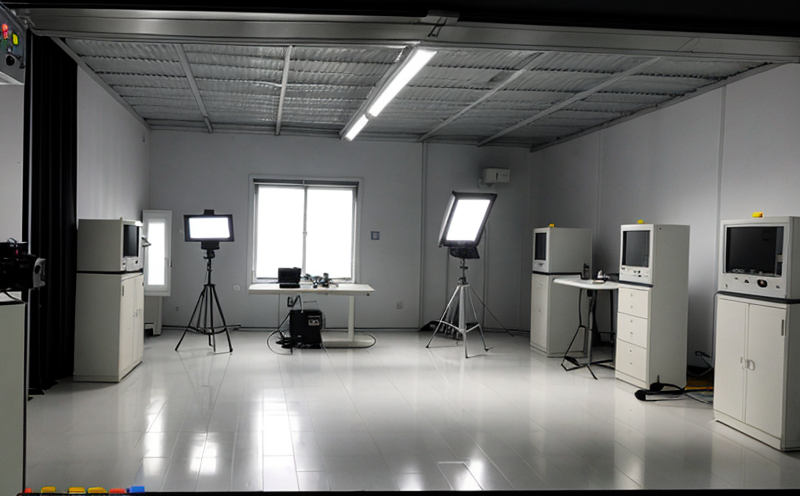EN 13201 Photometric Testing of Street Lighting Installations
The European standard EN 13201 specifies requirements and methods for photometric testing of street lighting installations. This test ensures that the luminaires meet specific performance criteria, contributing to energy efficiency, safety, and effective nighttime visibility.
Photometric testing measures the light distribution characteristics of a luminaire. This includes evaluating the lumens emitted from various angles and distances. The standard is crucial for ensuring compliance with regulations and achieving optimal lighting in urban environments.
The test procedure involves placing the luminaire in a controlled environment where it can be illuminated uniformly. A photometer captures the light distribution, providing data on luminous intensity, total luminous flux, and other parameters that are critical to understanding the luminaire's performance. Compliance with EN 13201 ensures that street lighting installations contribute positively to urban planning.
Compliance with this standard is mandatory for any luminaire intended for use in a public space or commercial area where lighting efficiency and quality are paramount. The test not only helps in meeting regulatory requirements but also enhances the overall safety and aesthetic appeal of the environment by ensuring adequate visibility at night.
Testing under EN 13201 involves several key steps, including the preparation of the luminaire for testing, placement in a photometric chamber, and data collection. The luminaire is typically installed on a mounting plate to simulate real-world conditions, allowing accurate measurement of light distribution. The test results are then compared against specified criteria outlined in EN 13201.
The standard also addresses the impact of glare, which can be a significant issue in street lighting installations. Glare control is essential for maintaining high levels of visual comfort and reducing eye strain. The photometric testing ensures that the luminaires meet both functional and aesthetic requirements, contributing to a safer and more pleasant environment.
Understanding the test parameters and specimen preparation is crucial for accurate results. The luminaire must be cleaned thoroughly before testing to ensure no external factors affect the outcome. Proper alignment of the luminaire within the photometric chamber is also essential to avoid skewing the data. Once prepared, the luminaire undergoes rigorous testing to meet the stringent requirements set by EN 13201.
The testing apparatus used in this process includes a photometer capable of measuring light distribution across various angles and distances. The photometric chamber provides a controlled environment for accurate measurement, ensuring that external variables do not interfere with the test results. This setup allows for precise evaluation of the luminaire's performance against specified criteria.
The data collected during testing is analyzed to ensure compliance with EN 13201. Compliance involves meeting specific parameters such as luminous intensity, total luminous flux, and glare control indices. Non-compliance can lead to issues in nighttime visibility and increased energy consumption, both of which are critical considerations for urban planners and lighting designers.
The results from EN 13201 photometric testing provide valuable insights into the performance of street lighting installations. These insights are essential for making informed decisions about lighting design and implementation. By adhering to this standard, stakeholders can ensure that their projects meet both regulatory requirements and quality expectations.
In conclusion, EN 13201 photometric testing is a critical process in ensuring the quality and reliability of street lighting installations. It plays a vital role in enhancing nighttime visibility, reducing energy consumption, and contributing to safer urban environments. By following this standard, stakeholders can achieve high-quality lighting that meets both functional and aesthetic requirements.
Industry Applications
| Application | Description |
|---|---|
| Urban Planning | Ensures adequate lighting for public spaces, enhancing safety and reducing accidents. |
| Transportation Safety | Aids in improving visibility at intersections and on highways, reducing the risk of accidents. |
| Sustainable Cities | Promotes energy-efficient lighting solutions, contributing to reduced carbon footprints. |
| Real Estate Development | Aesthetic improvements and enhanced safety features attract residents and businesses. |
| Public Utilities | Maintains lighting standards across various urban utilities, ensuring consistent performance. |
| Environmental Protection | Promotes the use of energy-efficient solutions that minimize light pollution. |
Quality and Reliability Assurance
- Luminous Intensity: Ensures the luminaire meets specified minimum and maximum limits.
- Total Luminous Flux: Measures the total amount of light emitted by the luminaire.
- Glare Control Indices: Evaluates the luminaires' ability to reduce glare, improving visual comfort.
- Color Rendering Index (CRI): Assesses the luminaire's ability to render colors accurately.
- Light Distribution Patterns: Provides a detailed analysis of how light is distributed in different directions.
Competitive Advantage and Market Impact
Compliance with EN 13201 provides a significant competitive advantage by ensuring that lighting installations meet the highest quality standards. This compliance enhances safety, improves visibility, and contributes to more sustainable urban environments.
By adhering to this standard, businesses can demonstrate their commitment to quality and reliability, attracting clients who prioritize these factors. The ability to provide high-quality, compliant street lighting installations also opens up opportunities for market expansion into regions with stringent regulatory requirements.
Additionally, compliance with EN 13201 can lead to cost savings in the long run by reducing energy consumption and maintenance costs. This is particularly beneficial in large-scale urban projects where consistent performance is crucial.





